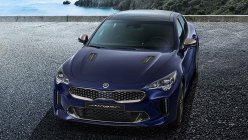1. Blind spot in driving
Every time we board our cars, there’s a significant amount of pride and confidence that we feel. It’s partly out of using our pride and joy, but more than that, it’s also the reassurance that we’re sitting inside a modern engineering marvel. The cars that we drive are virtual fortresses that enclose and protect us in a controlled environment as we deal with daily traffic.
For some of us, however, it’s easy to forget that we’re driving in the Philippines, where various hazards have a habit of popping up at the most inopportune times. And when they do, usually too late for us to do anything other than scratch our heads and wonder how much it’s going to cost us this time, on top of the routine expenses of car ownership.
Keeping eyes on the road ahead is a given for Pinoy drivers, regardless of whatever vehicle they’re driving. But no car is engineered as a perfect machine; they all have their flaws. And one of those flaws which directly impact our everyday experience behind the wheel is the presence of blind spots in driving.
How to Handle Blind Spots | Driving Lessons
2. What is a blind spot in driving?
Blind spots are areas of your car which you, as the driver, cannot directly observe while you are in control of the vehicle, whether looking forward, through the rear-view, or side mirrors. This isn’t due to a physical shortcoming on your part (assuming you meet the minimum physical requirements of your driver’s license), but more as a result of your vehicle’s design, payload and environmental conditions.
A car uses vertical posts or pillars in its structure to support the window area or greenhouse, from the windshield to the rear window glass. While they bring the benefit of actually being responsible for your car’s headroom, there is no such thing as a perfect 360-degree visibility from the driver’s seat, since pillars also have a tendency to block certain areas from your field of view. A high driver seating point also makes it harder to see the lower areas of the car.
The number of people or cargo you happen to be carrying at any given instance can also affect your view. If you have a full load of adult passengers for example, it might be more difficult for you to check your rear view due to the number of heads blocking your way.
The weather can also influence your perspective, and not just in a figurative sense. Conditions such as rain or fog can effectively reduce your ability to see forward at a considerable distance, which is essential to road safety. Even smoke that drifts into your sightline from forest fires can have the same effect. Anything that cannot be seen beyond 100 meters or 330 feet is considered zero visibility.
The most common blind spot across cars is the rear-quarter view, or the area approaching the rear of the vehicle, whether left or right. A person, animal or object that falls within your car’s blind spots may not immediately be noticeable for you to take appropriate action, which can result in accidents.
3. How to remove blind spots on your car?
Barring costly modifications to your current vehicle’s design (or even the costlier option of buying a new car altogether), there are steps you can take to eliminate or at least reduce blind spots in driving.
3.1. Adjust the rear-view mirror
The rear-view mirror should be angled toward the rear window, slightly favoring the rear passenger side. Your head as the driver should not be visible in the mirror, because it’s not there for you to use in checking your teeth, applying makeup, or even making faces with your passengers at the back.
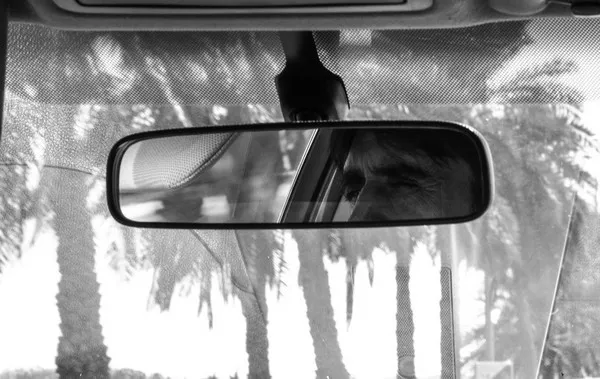
Only your passengers should see your face on the rear view mirror, not you
3.2. Adjust the side mirrors
Next, adjust your car’s side mirrors in such a way that there is little to no overlap between them and the rear-view mirror. The side mirrors should be turned outward, since they are designed to show you what’s coming up beside you, not what is directly behind you. As a rule of thumb, you should *not* see the sides of your car through your side mirror; this sounds counterintuitive since this removes your point of reference, but it is the safest position for your side mirrors.
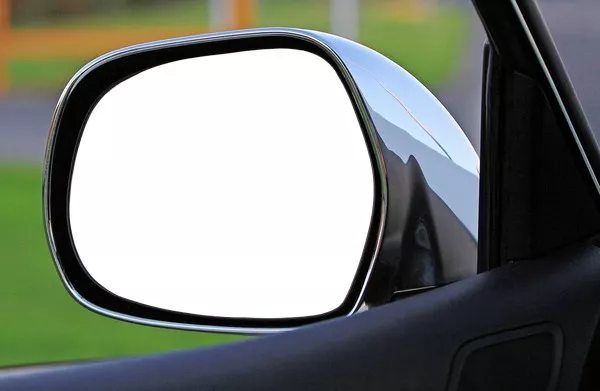
Your driver side mirror should show nothing of your car's view
Sitting on the driver’s seat, lean to your left side until your head is touching the driver’s side window. Next, adjust your side mirror in such a way that it reflects your car’s rear. Then, lean to your right until your head is positioned between the front seats, after which you should adjust the passenger side mirror to reflect just the side of the car. Remember that the height of both side mirrors should be parallel to the ground.
>>> Convex mirror is among 5 must-have items for new cars
By the time you return to your normal driving position, your side mirrors are now close to the ideal angle necessary to reduce your blind spots, with only a few adjustments needed. Notice that on newer cars today, the passenger side-view mirror tends to be convex in shape, giving you a greater field of vision. Consequently, you won’t have to position it as far outside as you would need to on the driver’s side.
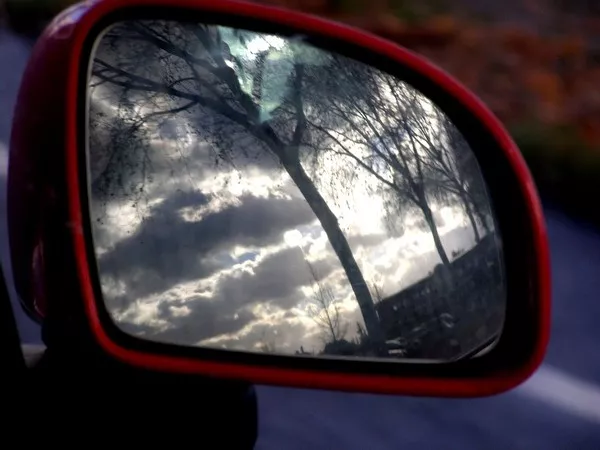
The passenger side mirror on modern cars is more convex
Of course, it goes without saying that you should only adjust your side mirrors while at a traffic stop or parked in a secure area, never while driving. Distractions are blind spots in themselves since they take your attention away from the road, and you can get into a serious accident as a result.
3.3. Equip your car with aftermarket mirrors
If you feel that the stock mirrors are not enough in providing you with adequate visibility, you can replace them with mirrors that have a larger field of view. A variety of aftermarket rear-view mirrors are available for this purpose, as well as supplementary mirrors you can attach to the side-view mirrors to help you monitor the lower area of your car, useful when backing into a parking space to see if you’re about to hit a gutter or any other obstacle.
With your rear-view and side mirrors properly oriented, they will form a triangle for your field of view to quickly monitor the position of vehicles behind you as they transition to either side of your car while in motion.
As far as forward visibility is concerned, it helps for you to move your head slightly when scanning the road. Your car’s A-pillar will most likely be thick as a safety measure, but as a result, it will also block a considerable part of your sightline. Turning your head slightly in either direction as you observe the road gives you better depth perception, allowing you to better see hazards that are coming into your blind spot, such as a pedestrian crossing the road or another car that’s about to run the red light at an intersection.
>>> Related: Top 8 blind spot mirrors to buy in the Philippines
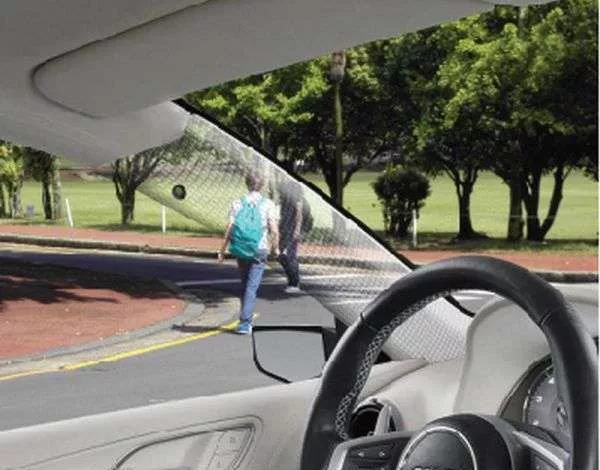
A-pillars on either side of your windshield are common blind spots
3.4. Use blind spot monitoring sensors
Now, if you happen to be in the market for a new car, then this would be a good opportunity to shop around for a vehicle equipped with blind spot monitoring sensors. These will sound off a loud, audible alarm whenever they sense that another vehicle is about to come alongside the car while in motion, giving you an early warning in case you plan to swerve or change direction. Given that sideswiping collisions are pretty common among vehicle accidents in the Philippines, this technology can prove itself useful in helping save lives.
4. Blind spot in driving: Verdict
Most importantly, none of these would ultimately be beneficial without constant driver diligence and vigilance. Develop the habit of constantly checking your blind spots and seeing if anything needs to be adjusted. A proactive mindset is a huge step in ensuring your safety and that of others you share the road with on a regular basis.
We hope that this article has provided you with useful knowledge about blind spots in driving. Click here to find an abundant list of other helpful driving tips for Filipino drivers on Philkotse.com
Recent posts
- Early Warning Device for cars: Must-have safety tool for every Pinoy driver Aug 18, 2023
- Blind spot detection and warning system: Better to know! Aug 16, 2022
- 14 safety tips when you have to drive in heavy rain Aug 16, 2022
- 5 safety tips to drive on the slippery roads Aug 16, 2022
- 8 Essential Safety Measures to Keep in Mind While Driving in the Philippines Oct 07, 2020


